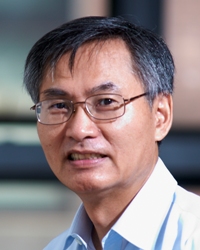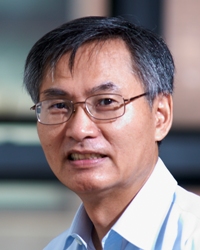Near-eye light field AR display with a continuous focal plane

Human eyes have evolved over millions of years to have consistent vergence and accommodation. However, most stereoscopic AR/VR displays available today can easily cause vergence-accommodation conflict (VAC) and hence visual fatigue to users. We resolve the problem by taking a light field approach that directly projects sub-aperture views of the light field of a virtual object into the user eyes as if the light rays are originated from a real object. This way, correct cues for vergence-accommodation reflex can be obtained. In this talk, I will show how a light field AR display with continuous focal plane can provide the most natural visual experiences for AR/VR users. In addition, I will show a system for constructing an omnidirectional light field using a dual-fisheye camera.
Date and Time
Location
Hosts
Registration
-
 Add Event to Calendar
Add Event to Calendar
- Simon Fraser University
- 8888 University Drive
- Burnaby, British Columbia
- Canada V5A 1S6
- Building: Applied Science Building
- Room Number: 10704
Speakers
 Prof. Homer H. Chen of National Taiwan University
Prof. Homer H. Chen of National Taiwan University
Near-eye light field AR display with a continuous focal plane
Human eyes have evolved over millions of years to have consistent vergence and accommodation. However, most stereoscopic AR/VR displays available today can easily cause vergence-accommodation conflict (VAC) and hence visual fatigue to users. We resolve the problem by taking a light field approach that directly projects sub-aperture views of the light field of a virtual object into the user eyes as if the light rays are originated from a real object. This way, correct cues for vergence-accommodation reflex can be obtained. In this talk, I will show how a light field AR display with continuous focal plane can provide the most natural visual experiences for AR/VR users. In addition, I will show a system for constructing an omnidirectional light field using a dual-fisheye camera.
Biography:
Homer H. Chen received the Ph.D. degree in Electrical and Computer Engineering from the University of Illinois at Urbana-Champaign. Dr. Chen's professional career has spanned industry and academia. Since August 2003, he has been with the College of Electrical Engineering and Computer Science, National Taiwan University, where he is Distinguished Professor. Prior to that, he held various R&D management and engineering positions with U.S. companies over a period of 17 years, including AT&T Bell Labs, Rockwell Science Center, iVast, and Digital Island (acquired by Cable & Wireless). He was a U.S. delegate for ISO and ITU standards committees and contributed to the development of many new interactive multimedia technologies that are now part of the MPEG-4 and JPEG-2000 standards. His recent research is related to AR/VR, multimedia signal processing, computational photography and display, and music data mining
Dr. Chen is an IEEE Life Fellow. Currently, he serves on the IEEE James H. Mulligan, Jr. Education Medal Committee. Previously, he served on the Senior Editorial Board of the IEEE Journal on Selected Topics in Signal Processing from 2020 to 2022, the Awards Committee from 2019 to 2021, the Conferences Board from 2020 to 2021, the Fourier Award Committee from 2015 to 2017, and the Fellow Reference Committee from 2015 to 2017, all of the IEEE Signal Processing Society. He was a General Co-chair of the 2019 IEEE International Conference on Image Processing and a Distinguished Lecturer of the IEEE Circuits and Systems Society from 2012 to 2013. He was an Associate Editor of the IEEE Transactions on Circuits and Systems for Video Technology from 2004 to 2010, the IEEE Transactions on Image Processing from 1992 to 1994, and Pattern Recognition from 1989 to 1999. He served as a Guest Editor for the IEEE Transactions on Circuits and Systems for Video Technology in 1999, the IEEE Transactions on Multimedia in 2011, the IEEE Journal of Selected Topics in Signal Processing in 2014, and Springer Multimedia Tools and Applications in 2015.

